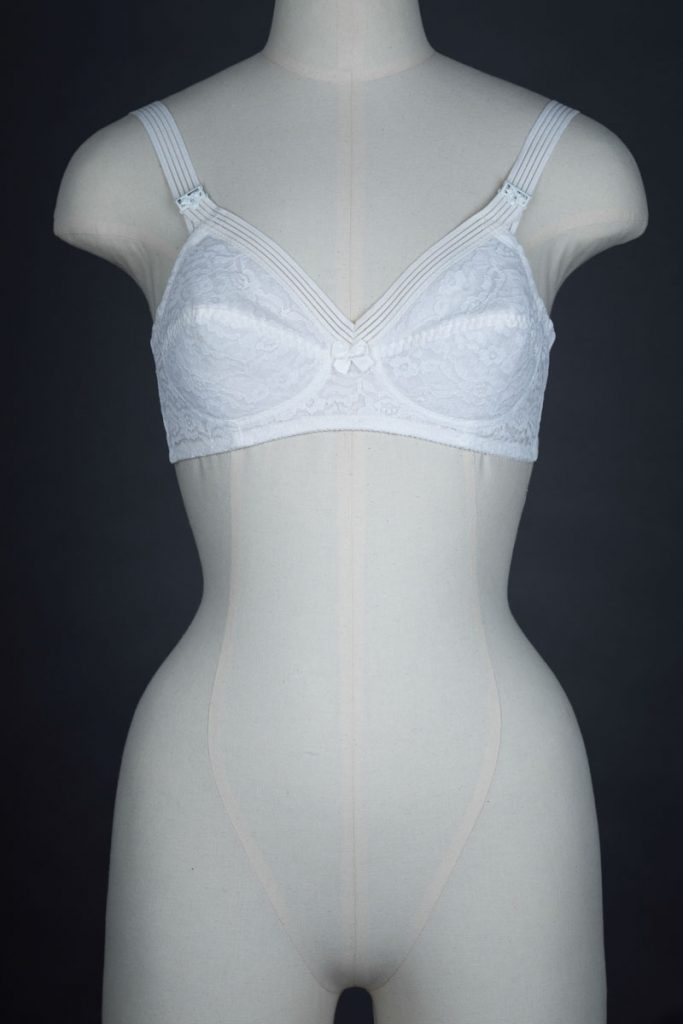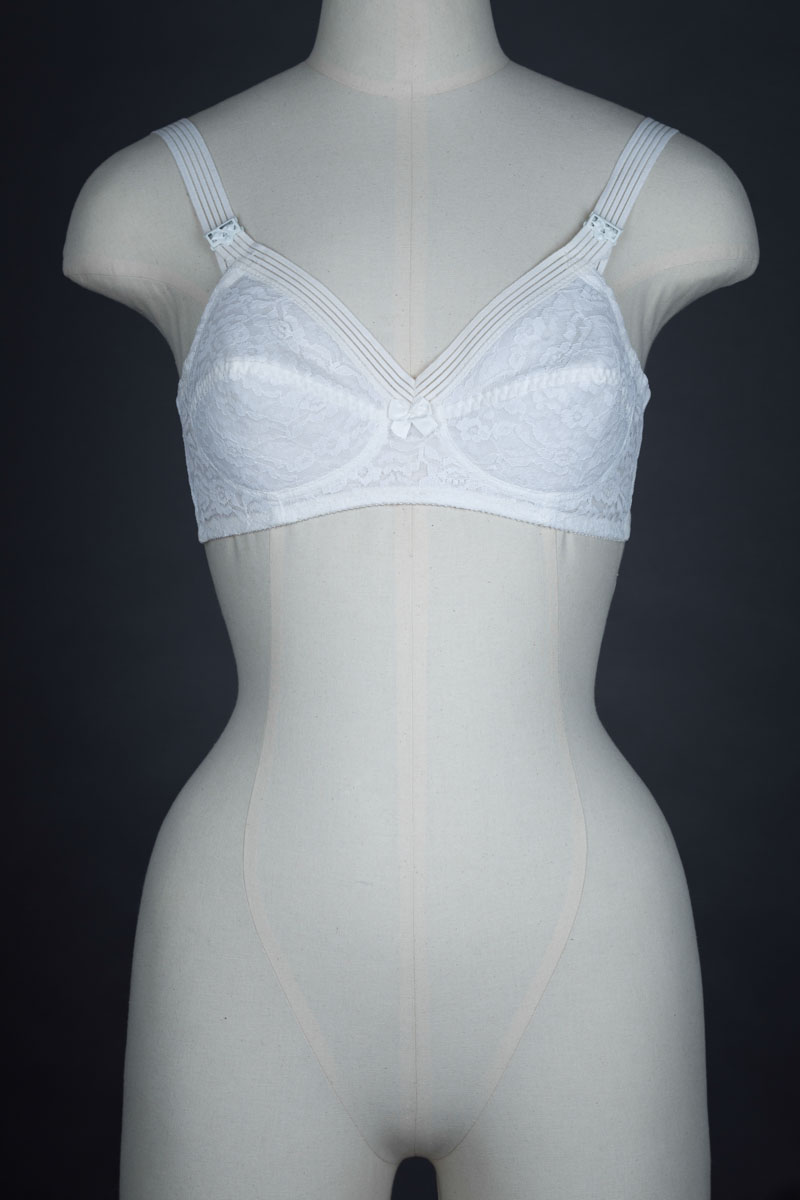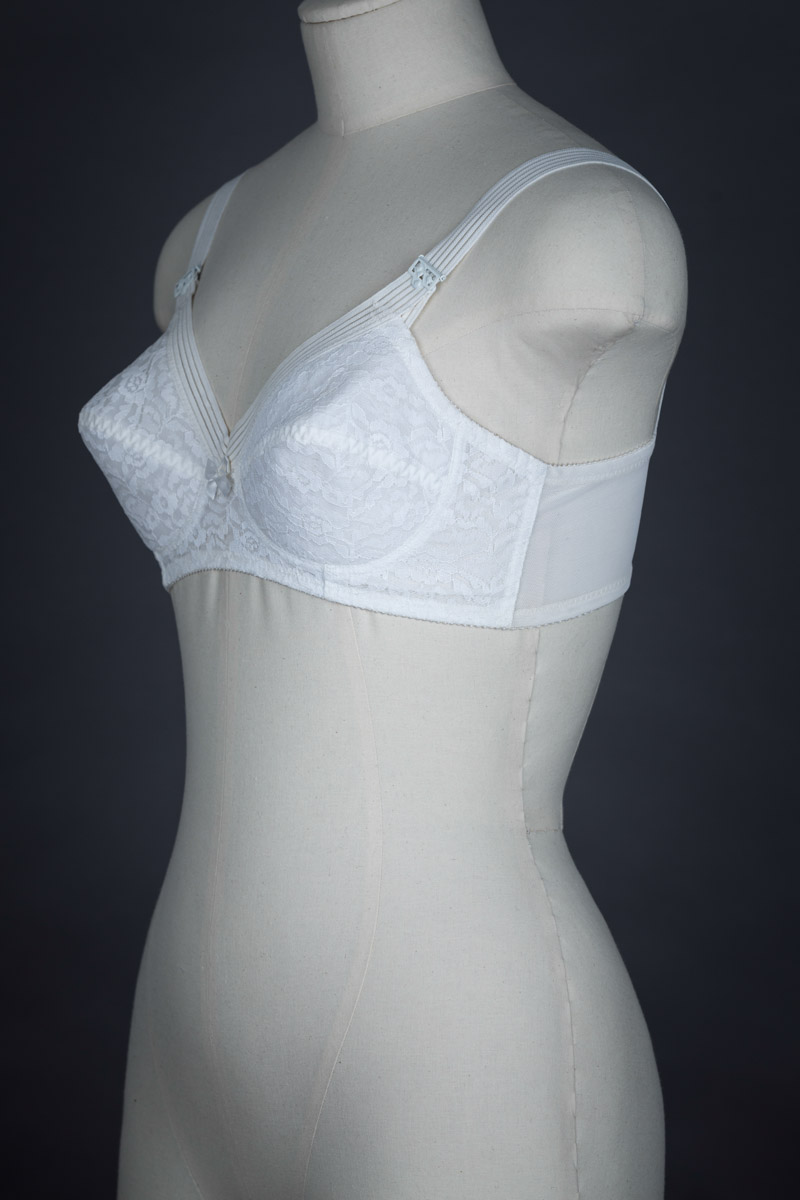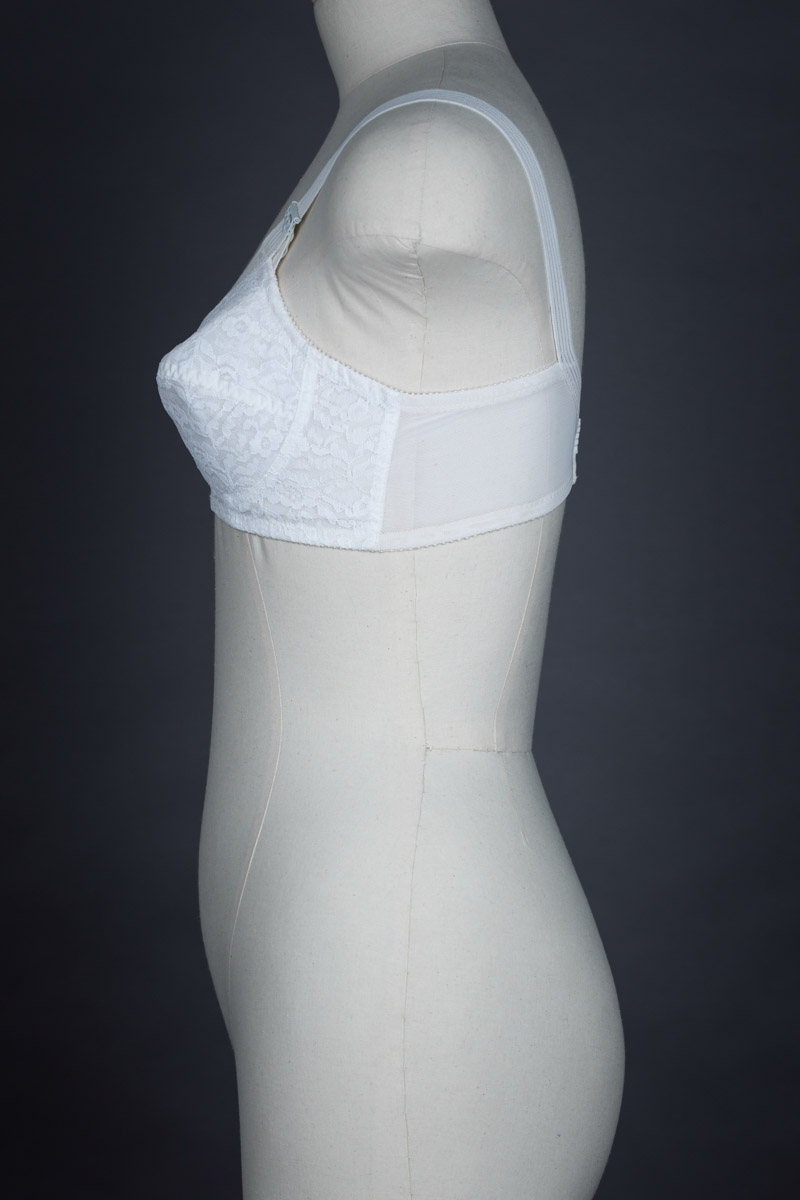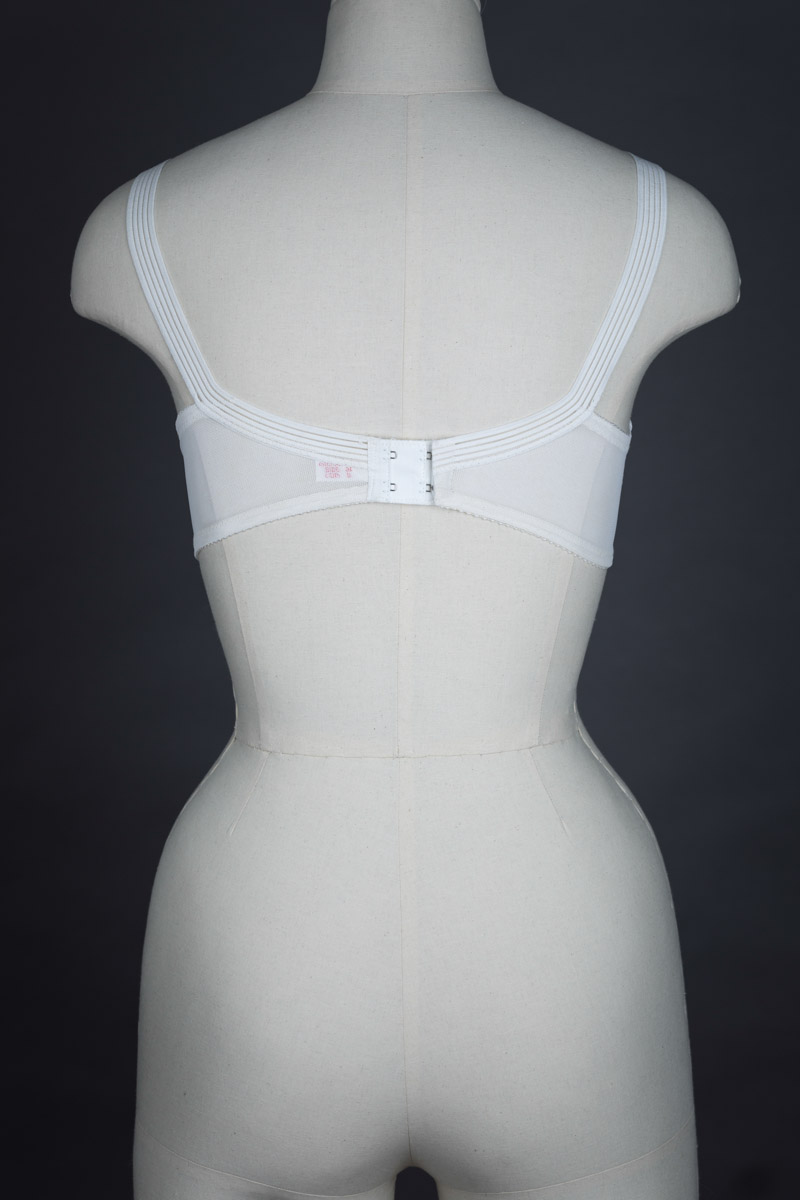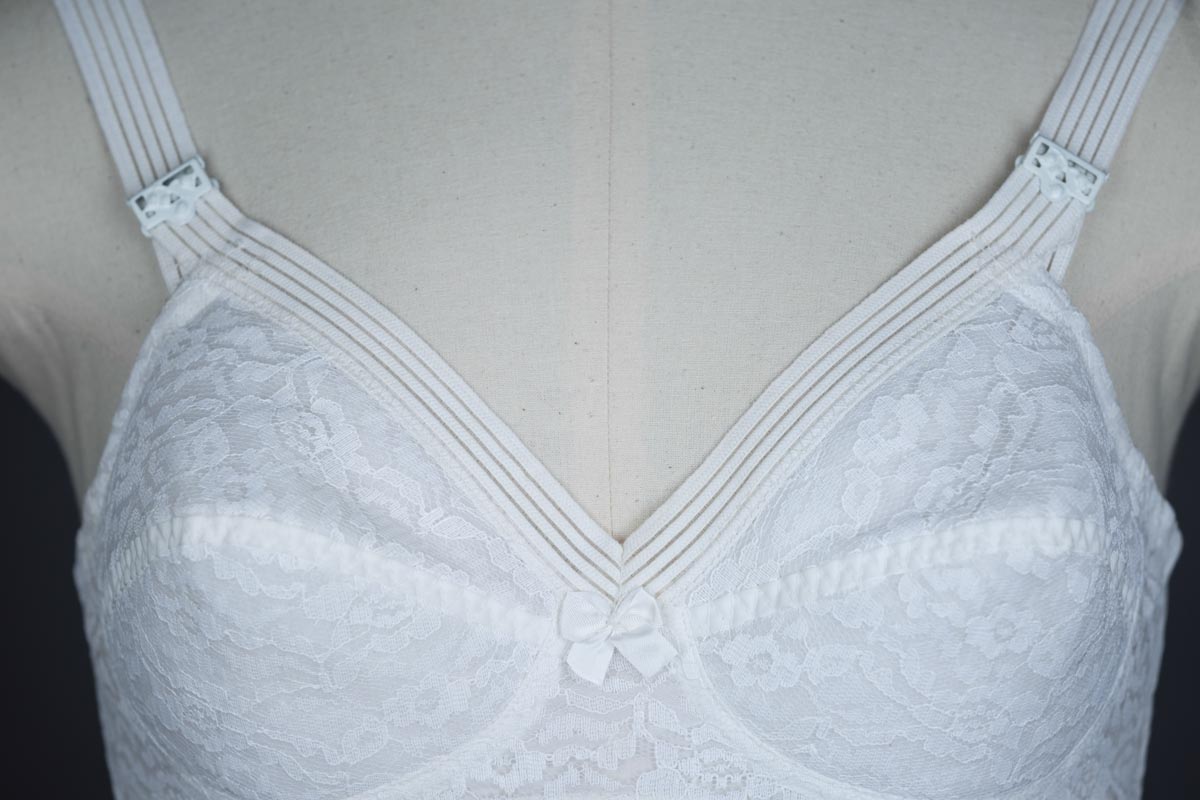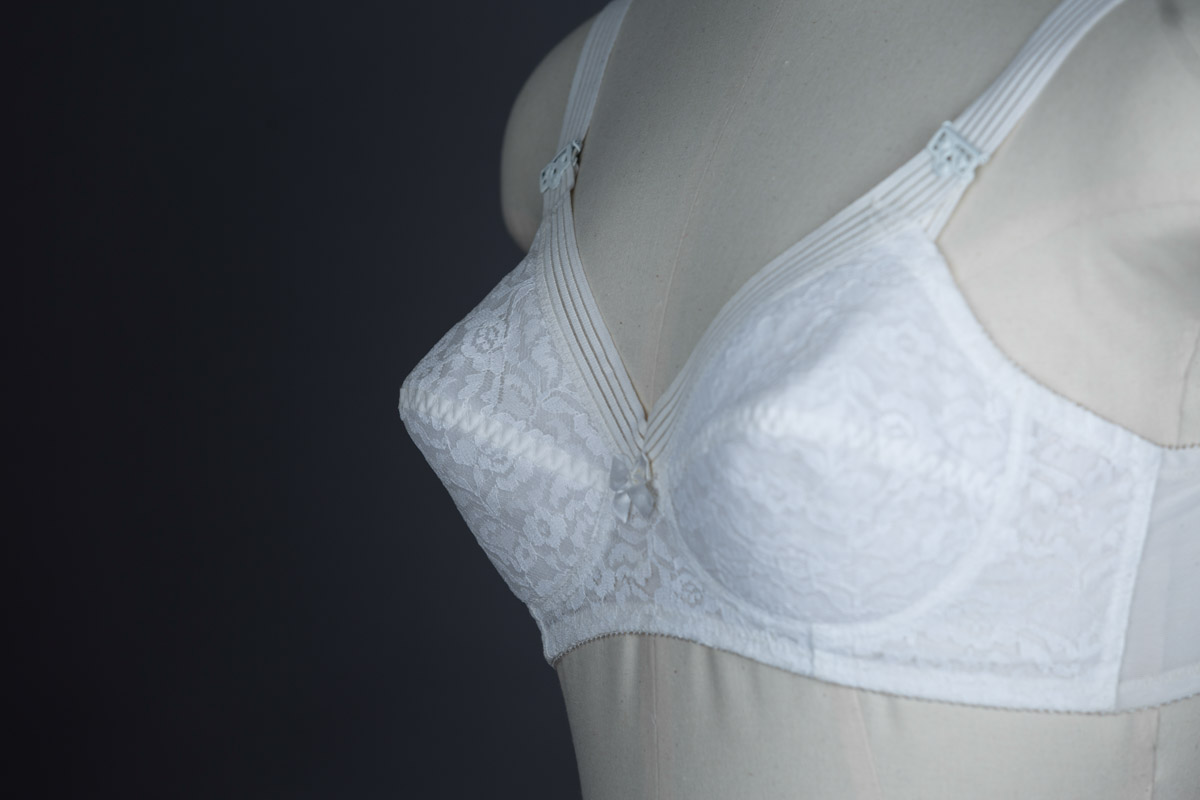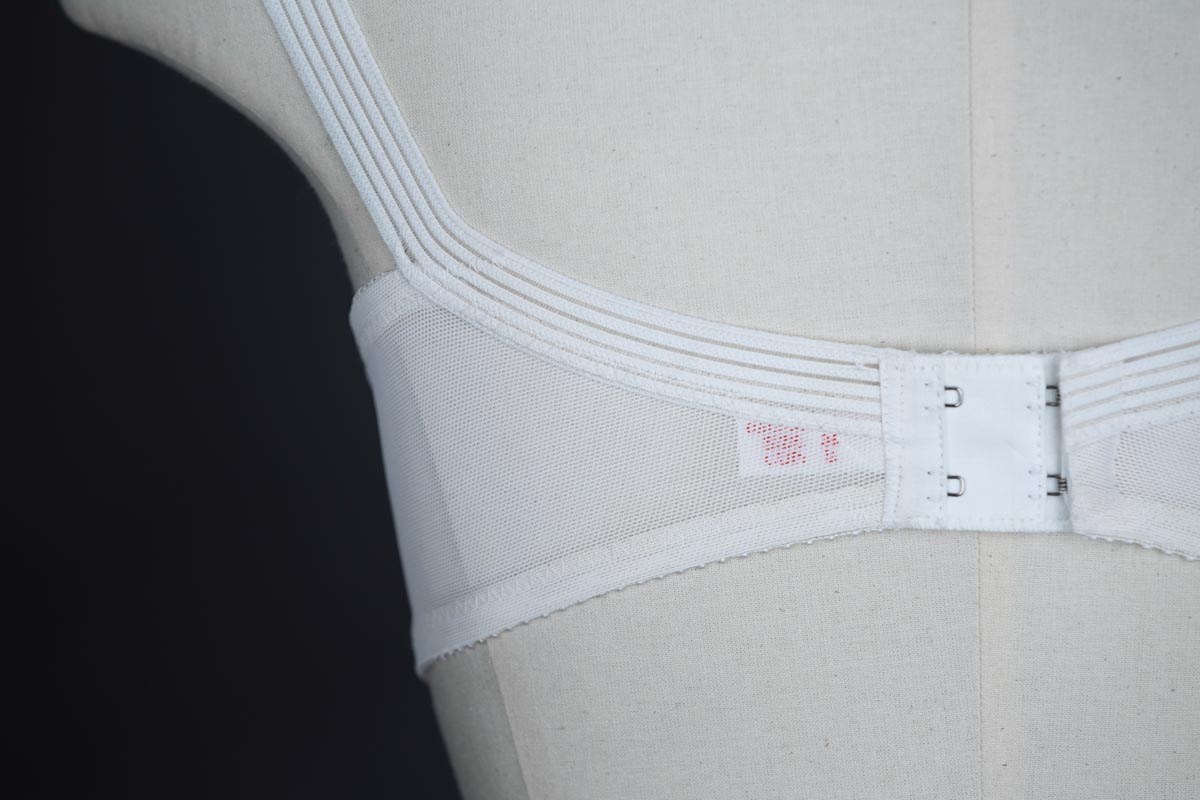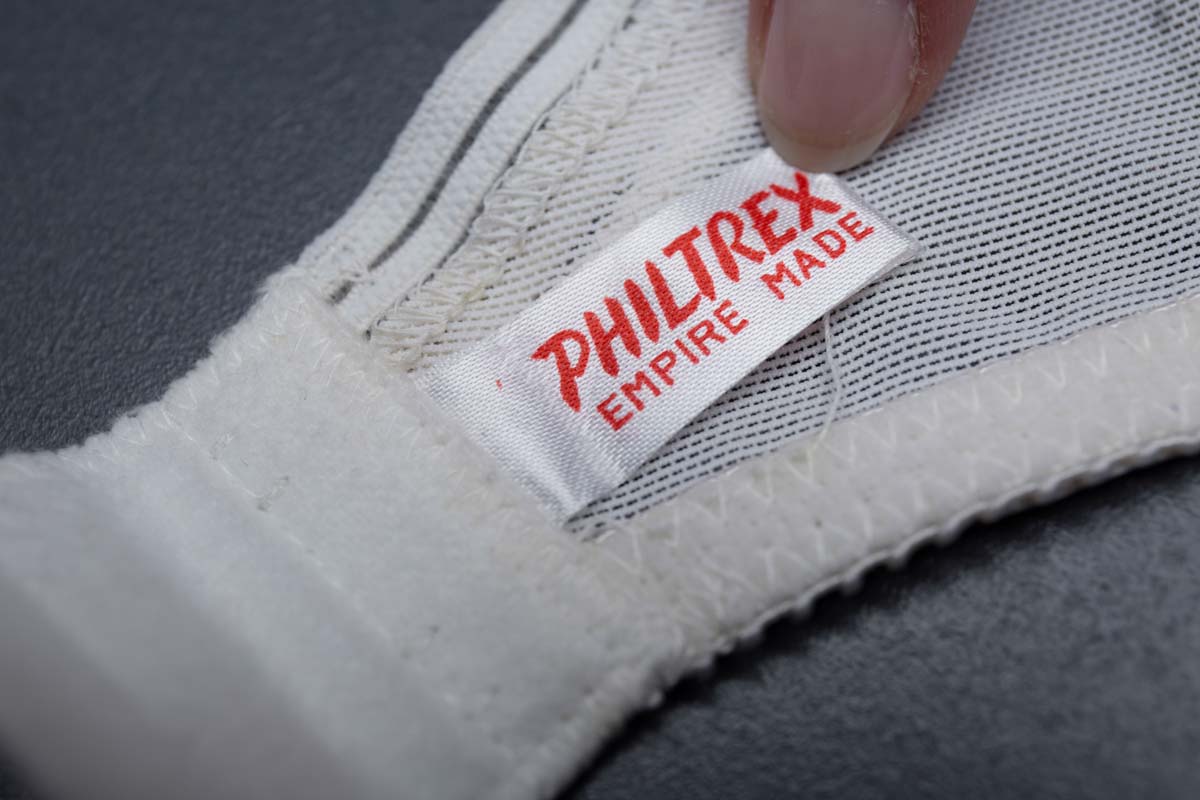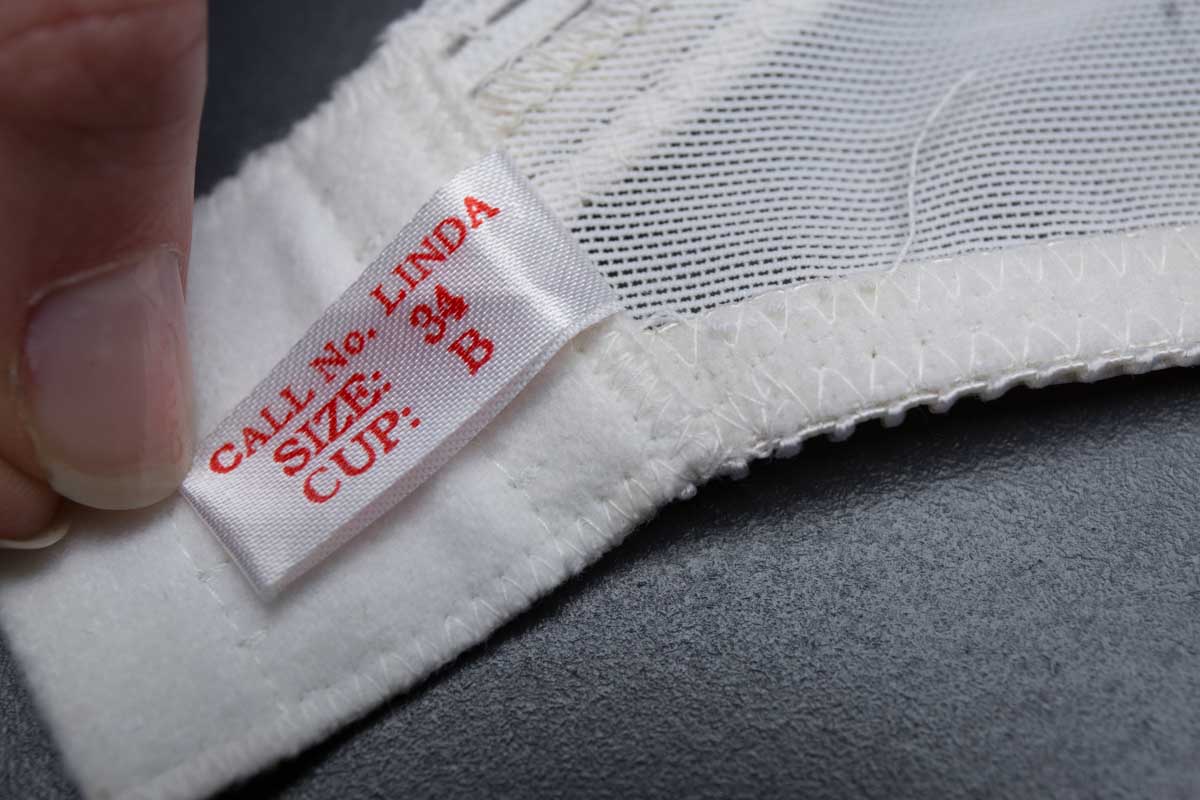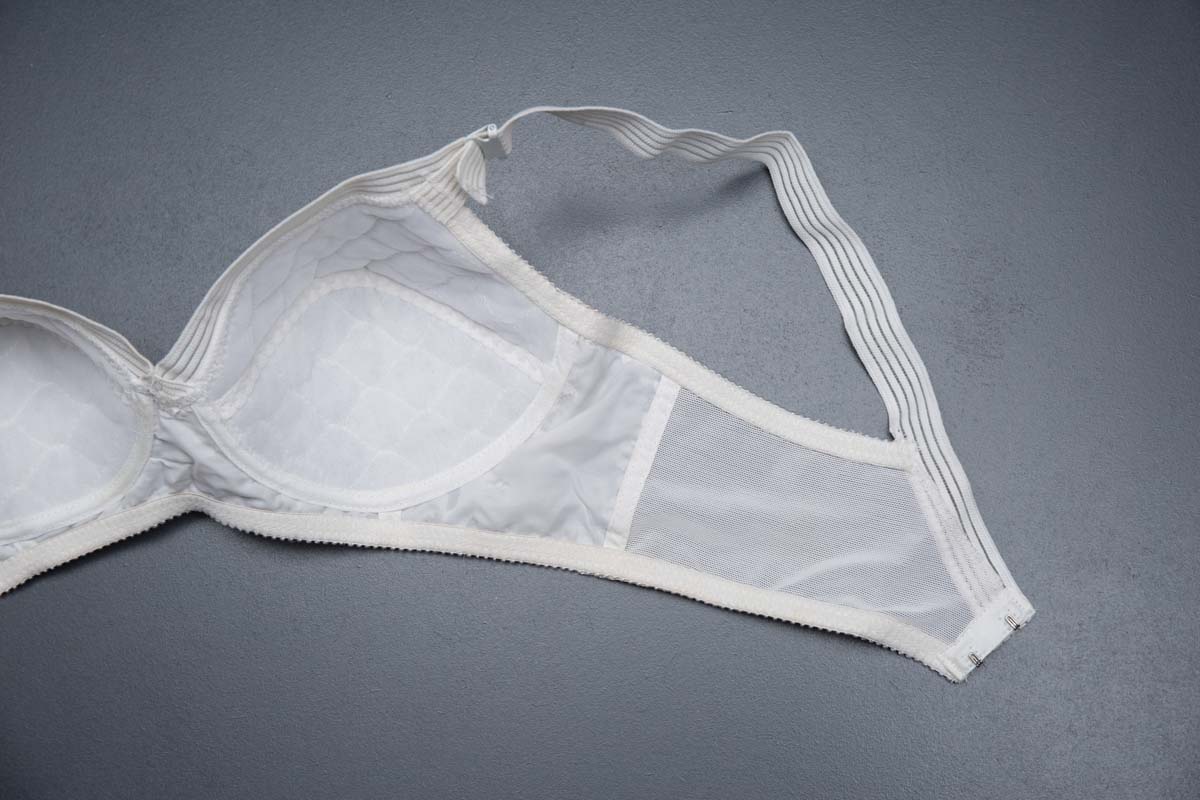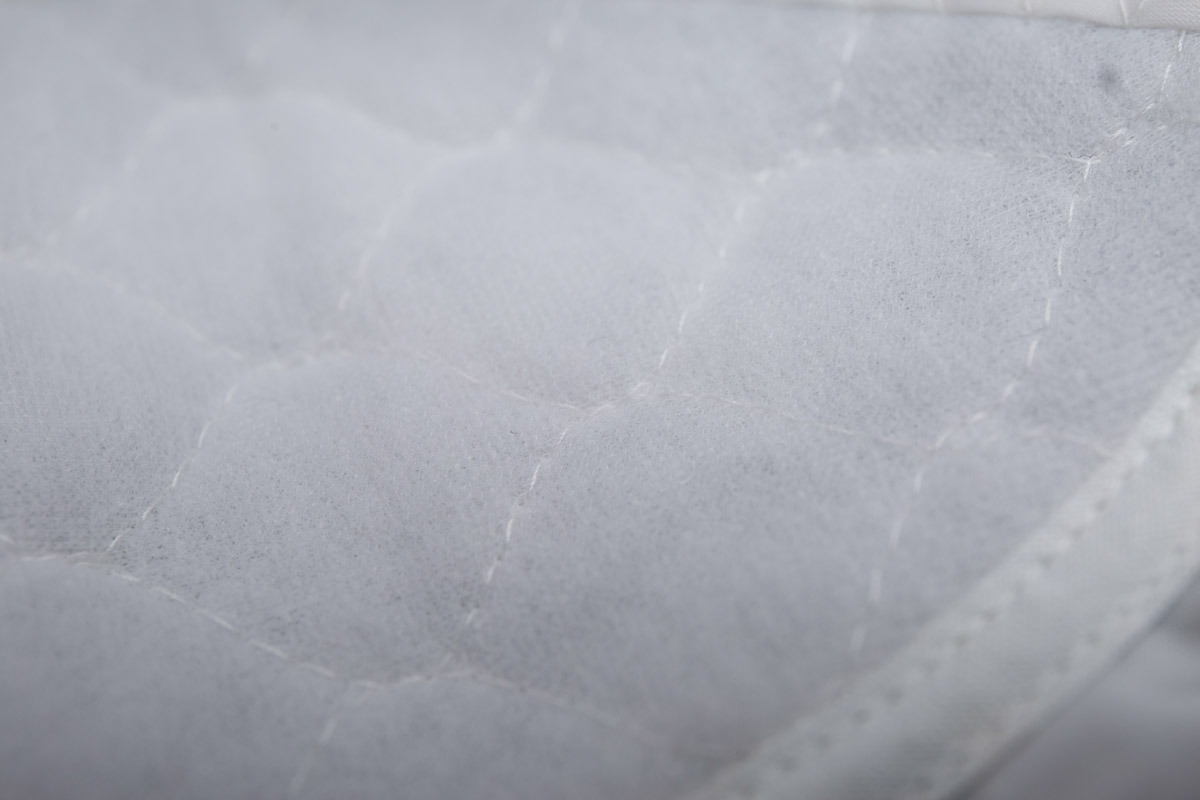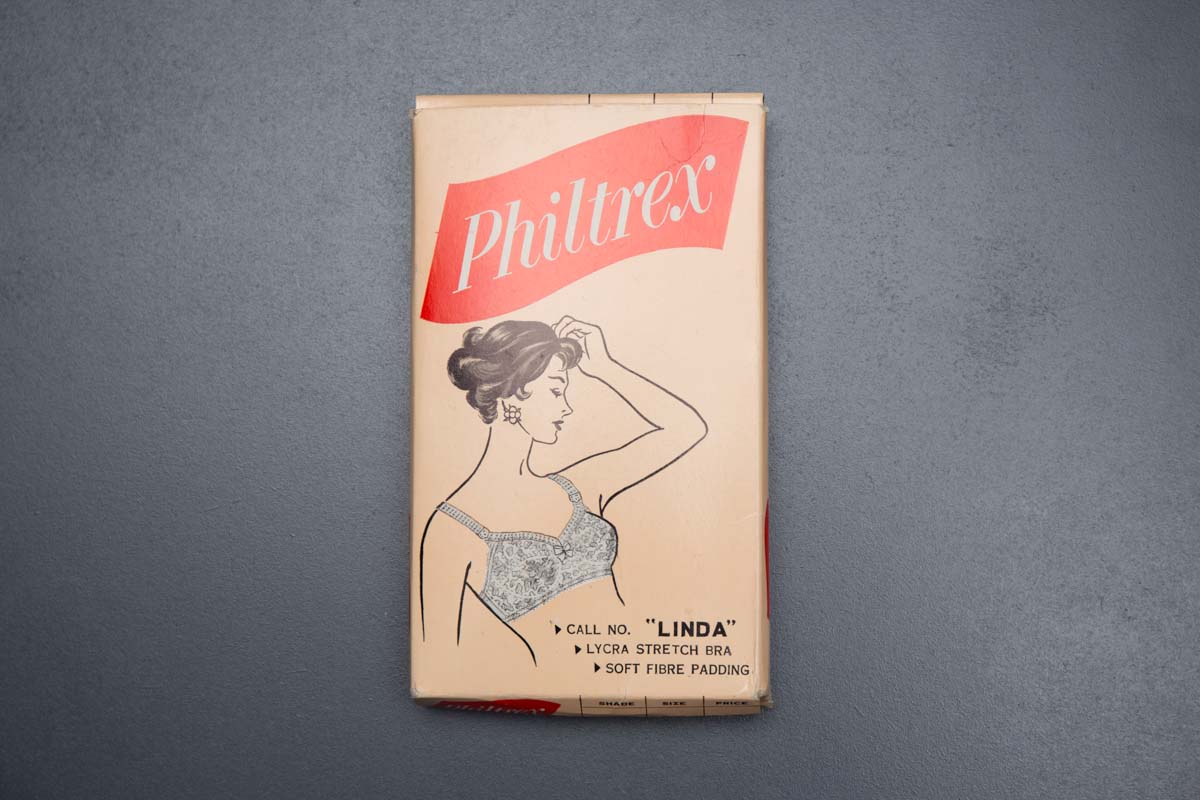Date: c. early 1960s
Origin: Likely Great Britain
Fabric: Nylon and lycra
Brand: Philtrex
Bras of this era mark the move into construction methods and materials that are still in use to this day. The garment silhouette is certainly typical of the 1960s, with the pointed bust line, but the use of lycra mesh wings, elastication throughout the garment, and adjustable stretch shoulder straps were innovative for the time period.
The bra uses a simple 2-part cup pattern, with lightweight quilted foam padding that has been butted across the seam and taped over with a 3-point stitch. The exterior of the cups and cradle are made of a Raschel rigid lace. The cup is sewn into the cradle and taped over with a nylon bias tape. The wings are made of stretch nylon-lycra powernet, a relatively new fabric for the time. The bra has been hemmed with a crown-edged elastic trim on both the underband and underarm, sewn with two rows of zigzag stitches. The cup neckline is trimmed with the same elastic that is used in the shoulder straps, leading to the cup apex where the shoulders are adjustable with suspender-style adjusters. Both the neckline and wing centre back have been overlocked on the garment interior, representing a much more industrialised style of manufacture.
The brand label states ‘Philtrex / Empire Made / Call No. Linda / Size: 34 / Cup: B’. The phrase ‘Empire Made’ gives a certain amount of ambiguity regarding the origin of the garment’s manufacture, but would have been part of the British empire.
In the late 1950s and early 1960s, bra cups could be moulded into shape and lined in a new process called pre-forming, which gave a very structured and rigid appearance. Linings were often made from foam, with holes added to make it more breathable, or from quilted polyester wadding. This enabled women to achieve a fuller or less uneven look without the use of puffs or pads that were common in previous decades.
Du Pont announced its new stretch fibre, Lycra, in 1959 and by the 1960s the majority of bras were made from a combination of nylon and Lycra. Advertising emphasised both the stretch straps and back of these bras, informing customers that ranges offered comfort in addition to control. Many images of models wearing bras with Lycra in the mid 60s showed them stretching the straps with their fingers to indicate this new feature.
From the collection of The Underpinnings Museum
